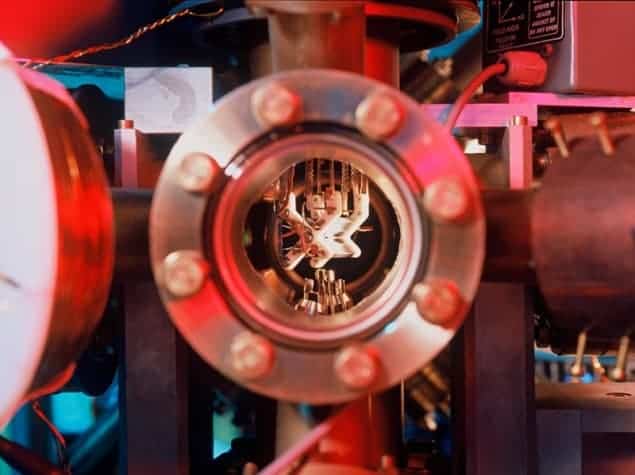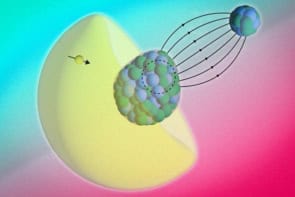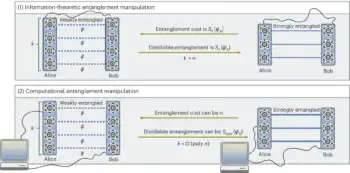
European physicists have won the race to observe zitterbewegung, the violent trembling motion of an elementary particle that was predicted by Erwin Schrödinger in 1930. To observe this phenomenon, the team simulated the behaviour of a free electron with a single, laser-manipulated calcium ion trapped in an electrodynamic cage.
They took this approach because it is currently impossible to detect the quivering of a free electron, which has an amplitude of just 10–13 m and a frequency of 1021 Hz. Computational simulations are also ruled out, because today’s computers have insufficient power and memory capabilities.
The researchers claim that their triumph may also serve as an important step towards using trapped ions and atoms to simulate high-temperature superconductivity, magnetism and even black holes.
Relativistic realization
According to Christian Roos at the University of Innsbruck, Austria, one of the keys to success was to make their non-relativistic ion behave as if it was a relativistic particle. This is crucial because zitterbewegung is predicted by the Dirac equation, which describes relativistic quantum mechanics.
Roos did the work along with colleagues at Innsbruck and the University of the Basque Country. “When the right conditions are met, the Schrödinger equation that describes this ion as a quantum system looks identical to the Dirac equation of the free electron,” he explained. The trapped, laser-manipulated ion can then be studied as an analogue of a relativistic free electron.
Calcium ions were chosen because they can be excited with visible wavelength lasers. “In addition, calcium’s level structure is sufficiently simple to allow the experimentalist a near-perfect control over the internal states of the ion, but complex enough to carry out the quantum measurements needed for inferring the position of the particle.”
Simulations begin by putting the calcium ion into a particular quantum state. This is allowed to evolve for a certain time, before the researchers measure the position of the ion.
Tiny movements
“In these measurements the particle moves by much less than the wavelength of visible light, so we cannot directly use an imaging technique to determine the position of the ion,” explains Roos. “Instead, we use a suitably tailored laser-ion interaction that maps the information about the position of the particle onto the internal states of the ion.” The ion’s position is then determined from its internal state, and this uncovers the quivering motion.
The act of measuring the ion’s position collapses its wave function, so the researchers have to reconstruct the desired initial wave function for every single measurement. This process is relatively quick, however, and they are able to carry out 50 experiments per second.
Adjusting the output of the laser alters the simulated particle’s kinetic energy to rest-mass energy ratio, and opens the door to studies of relativistic and non-relativistic physics.
The researchers found that changes to the particle’s effective mass while its momentum was kept constant led to the disappearance of zitterbewegung in the non-relativistic and highly relativistic limits (large and small effective masses, respectively). However, the quivering motion was clearly present in the regime between these limits.
Inspirational work
Jay Vaishnav from Bucknell University, Pennsylvania, says that the work of Roos and his co-workers represents a major step forward for quantum mechanical simulations, and she believes that it will inspire other research groups to attempt similar things.
She says that the building of an atomic version of the Datta-Das transistor – a spin-based device that has never successfully been built with electrons – could lead on from Roos’ work. “The workings of this transistor are based on creating a relativistic set-up using cold atoms.”
The work is reported in Nature.



